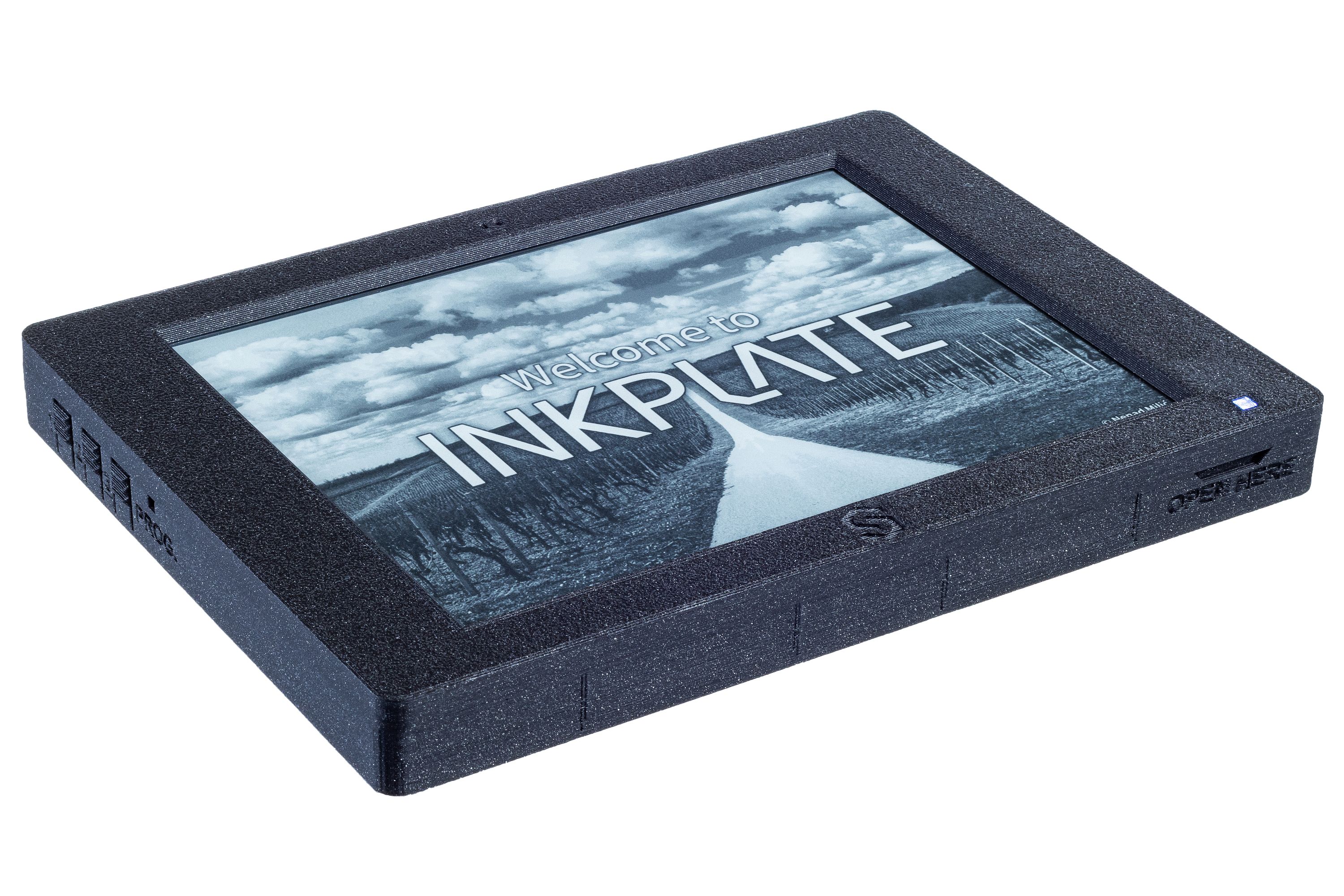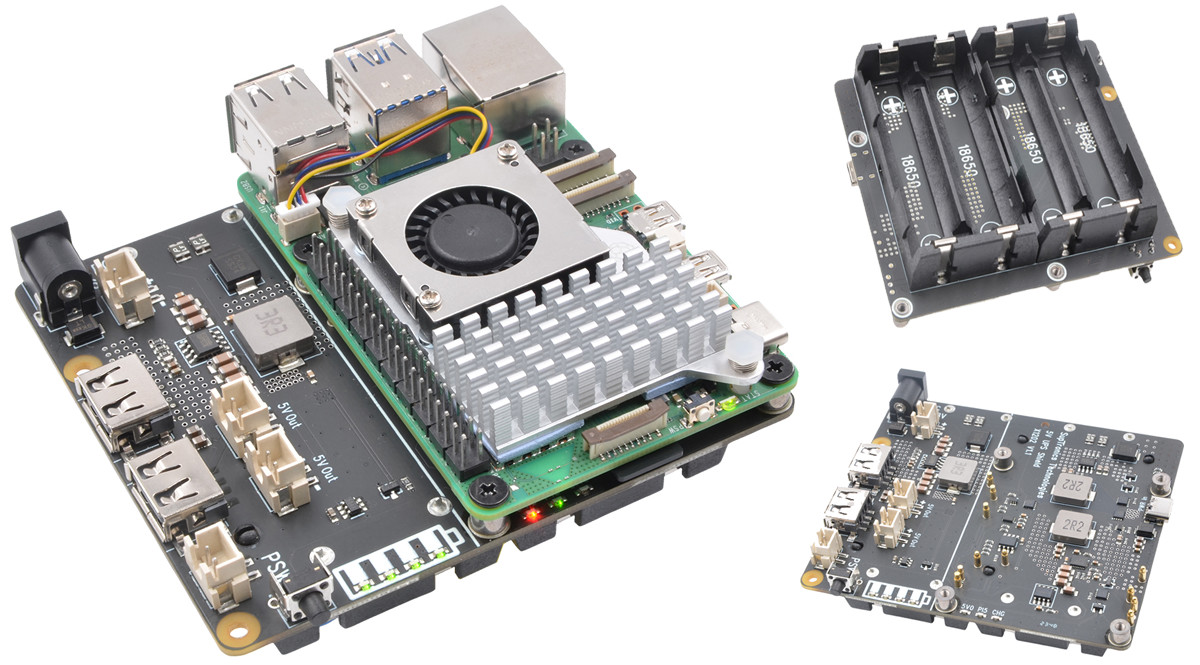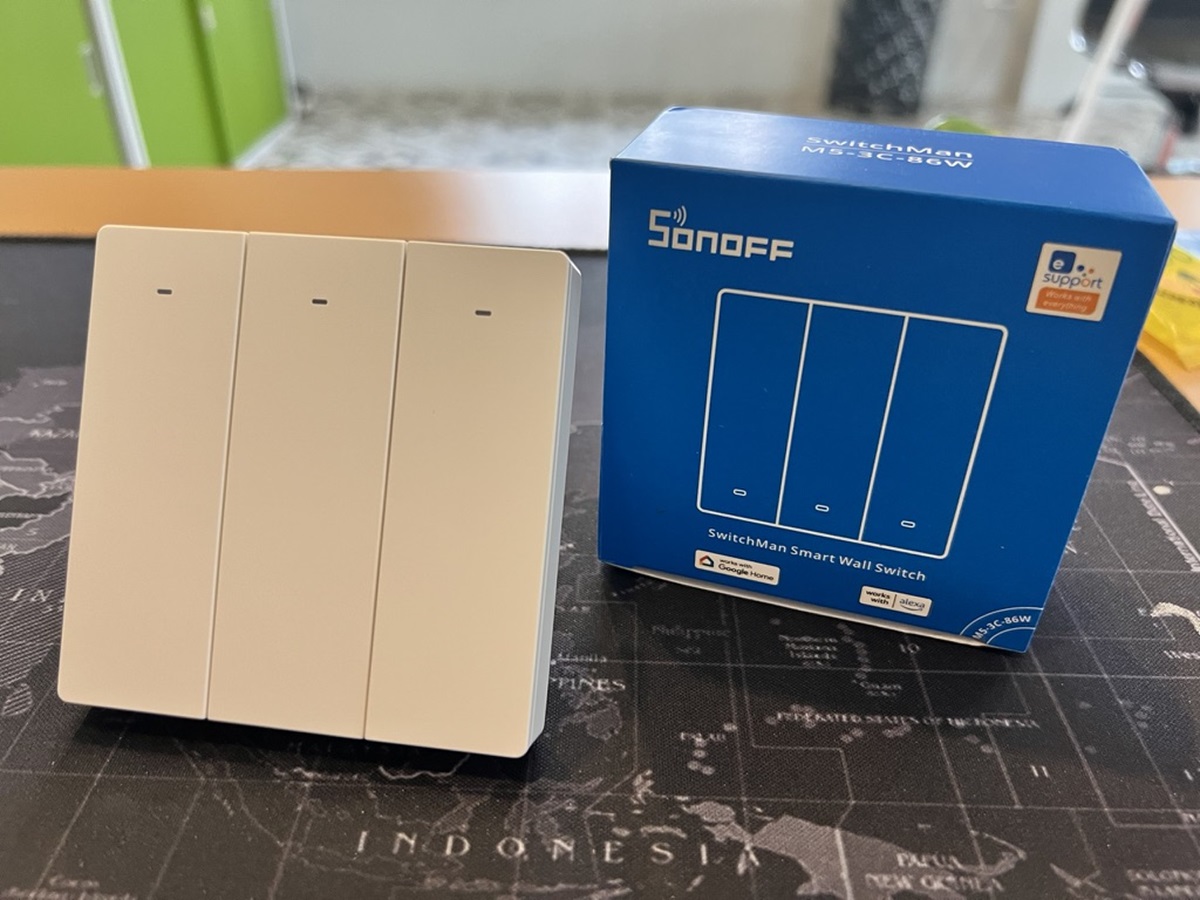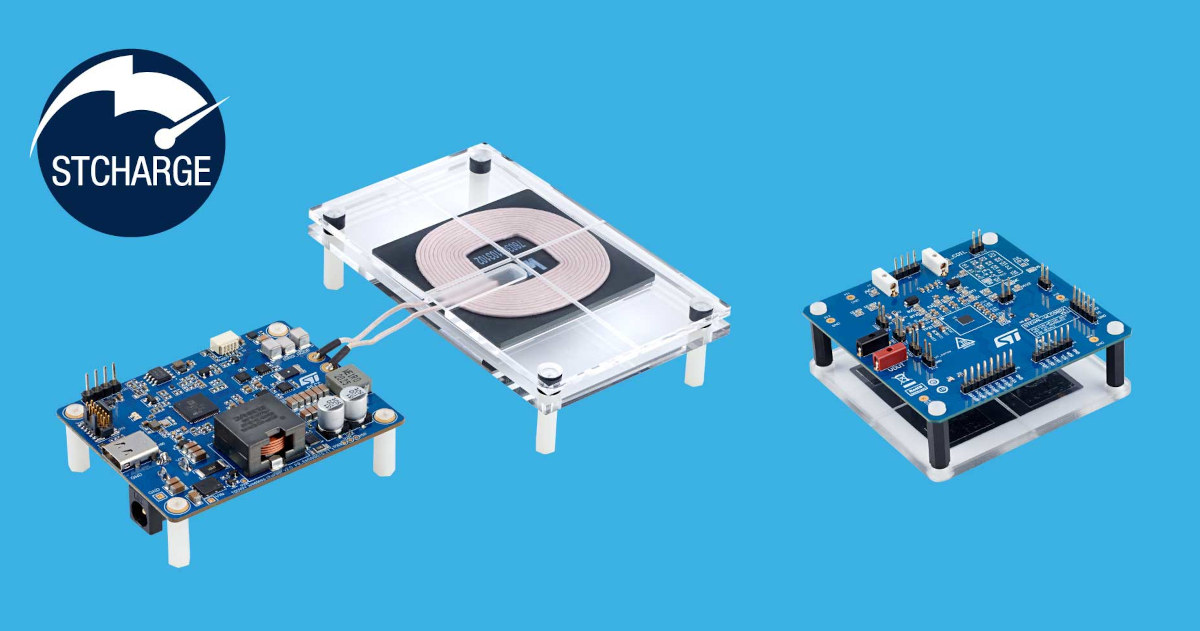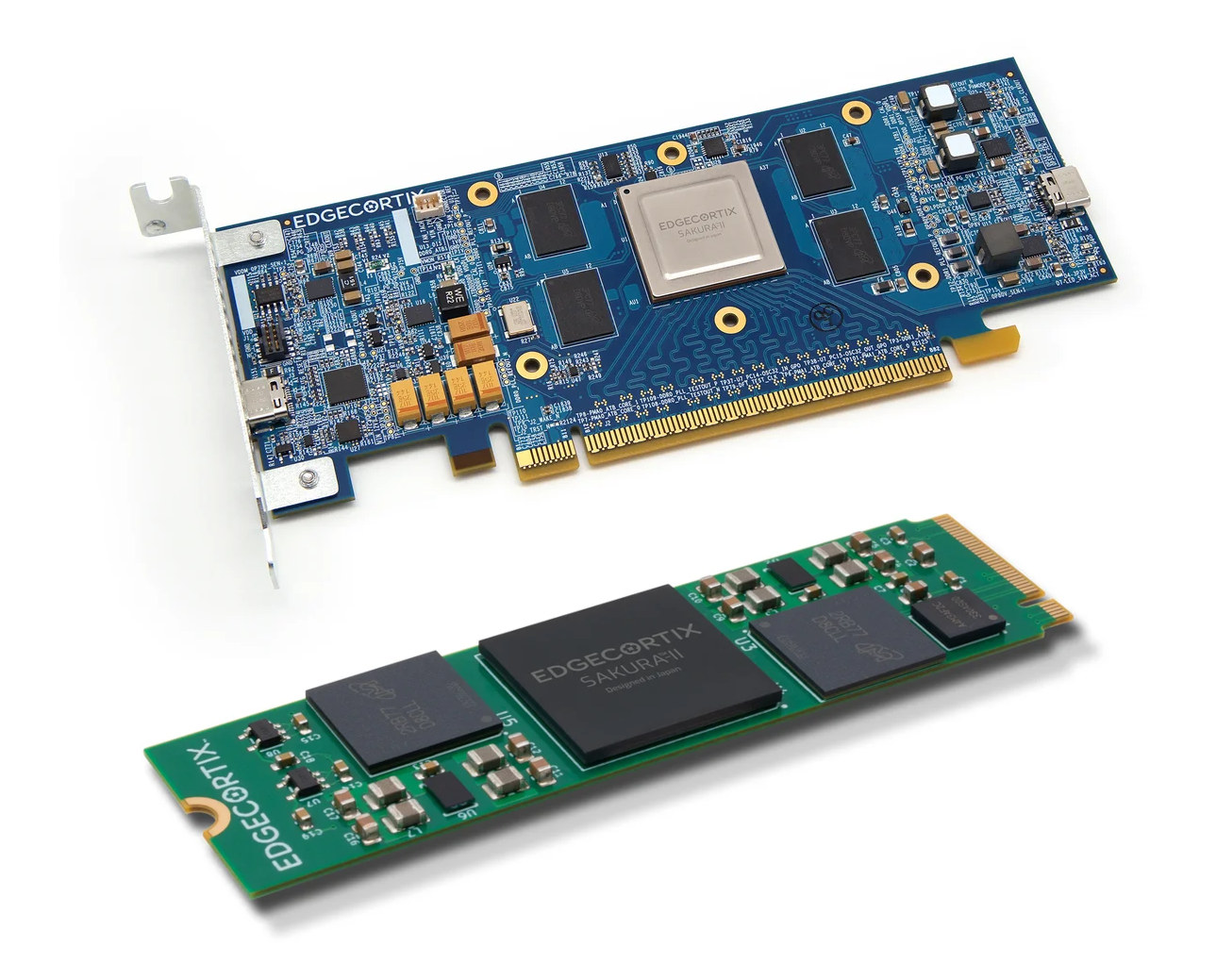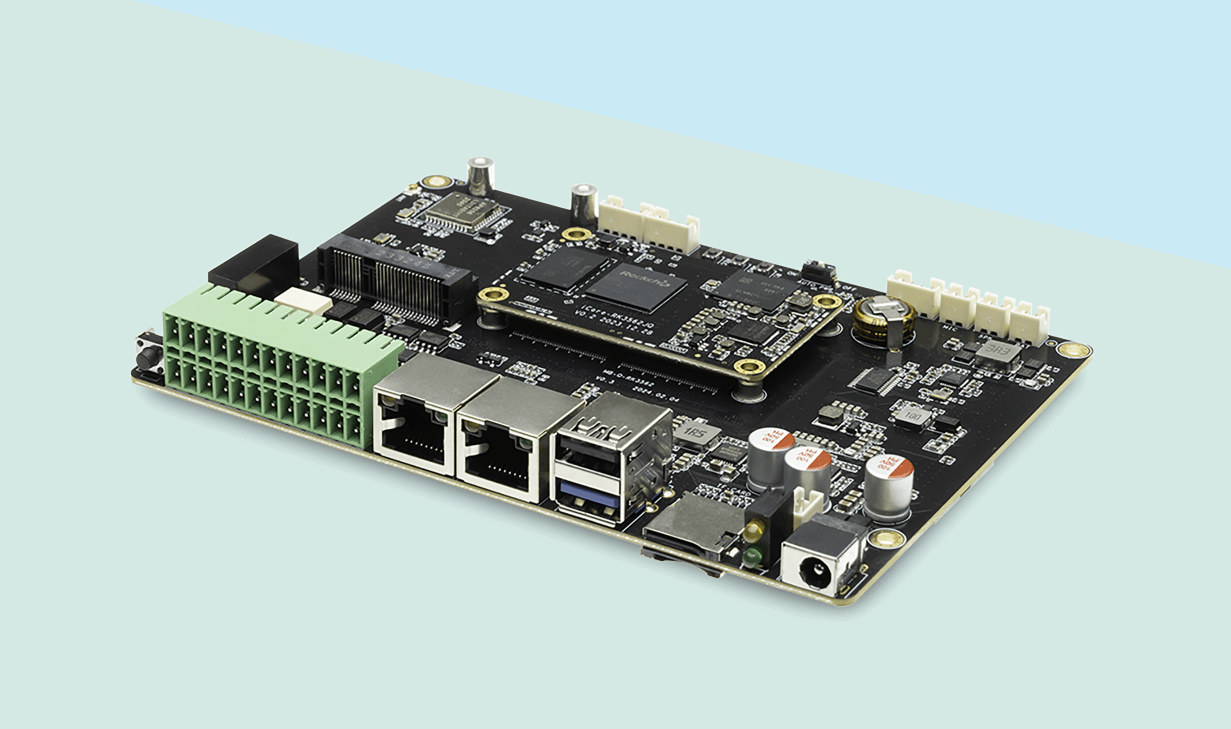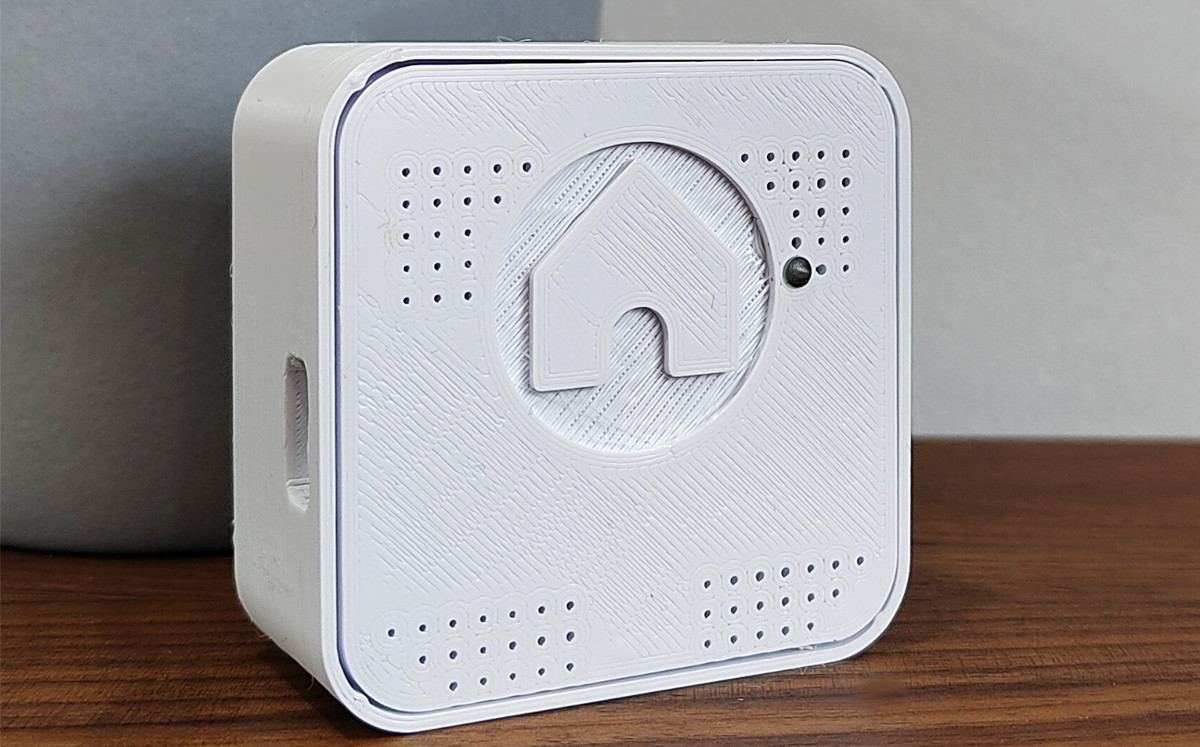The Inkplate 6 MOTION is a new product from Soldered Electronics in their Inkplate series of wireless e-paper displays. It is a 6-inch e-paper display with a partial refresh rate of 11fps which reduces obvious latency in rendering dynamic content such as videos, animations, and scrolling text. The display is driven by an STMicroelectronics dual-core STM32H743 microcontroller, with an ESP32-C3 as a secondary processor. It features Wi-Fi and Bluetooth for networking and a host of peripheral interfaces for physical connectivity. It includes several sensors such as a rotary encoder for quick navigation, a gravitational accelerometer with a gyroscope for tracking device orientation, and a motion detection sensor. We covered the original Inkplate 6 display when it launched on Crowd Supply in 2019. The Inkplate 6 is much less expensive than the new model but has a lower screen resolution (800 x 600 px) and slower refresh rates (256ms). Furthermore, it […]
SupTronics Raspberry Pi 5 UPS HAT X1202 V1.1 takes four 18650 batteries delivering up to 25W
For the tinkerers and DIYers out there, keeping a Raspberry Pi project running reliably, day in and day out, especially when the power is out is crucial, and previously Raspberry Pi UPS solutions have been available for years with products like Pascal Herczog’s Red Reactor, PiJuice Zero, PiVoyager, or LiFePO4wered/Pi+ and many others. But the problem with all these old solutions is that they cannot handle the power requirements of the new Raspberry Pi 5, especially when the PCIe is active and other peripherals are attached to it. This is where the SupTronics Raspberry Pi 5 UPS HAT comes in. This new SupTronics X1202 V1.1 UPS Shield includes four 18650 batteries and can deliver 5V with a higher current output of up to 5A, or 25W of power. Additionally, it includes automatic power switching and battery level detection via I2C, an integrated fuel-gauge system, battery protection mechanisms, and fast charging support, making […]
SONOFF SwitchMan M5 Matter Review – A Matter Smart Wall Switch tested with eWelink, Apple Home, and Home Assistant
We received the latest Smart Wall Switch from SONOFF, called the SwitchMan Smart Wall Switch-M5 Matter, which we will refer to in short as M5 Matter. This model supports Matter (over WiFi) and is very similar to its predecessor, the SwitchMan Smart Wall Switch-M5, with the addition of Matter. The M5 Matter provides an alternative option for easy integration with other Smart Home platforms that support Matter. This device is the second one from SONOFF to support Matter, we already reviewed the first Matter device, the SONOFF MiniR4M at the end of last year. Matter, developed by the Connectivity Standards Alliance (CSA), is supported by major companies such as Apple, Amazon, Google, LG, and Samsung, as well as other smaller companies. It could be a boon for Smart Home enthusiasts seeking a universal communication standard between devices, offering more choices, less complexity, and potentially lower costs. Let’s take a closer […]
50W high-power wireless charging boards target industrial, medical, and smart home applications
STMicro has introduced a combo of 50W wireless charging transmitter and receiver boards, namely the STEVAL-WBC2TX50 transmitter board and the STEVAL-WLC98RX receiver board, for the development of high-power wireless charging solutions such as medical and industrial equipment, home appliances, and computer peripherals. The transmitter board, based on the STWBC2-HP transmitter system-in-package (SiP), supports up to 50W of output power using the STMicro’s proprietary Super Charge (STSC) protocol, as well as the Qi 1.3 5W Baseline Power Profile (BPP) and 15W Extended Power Profile (EPP). The receiver board, based on the STWLC98 wireless power receiver IC, can handle up to 50W charging power through STSC, supports Qi BPP and EPP charging, and implements features such as Adaptive Rectifier Configuration (ARC) to extend charging distance by up to 50% and accurate voltage and current measurement for Foreign Object Detection (FOD). STEVAL-WBC2TX50 transmitter board highlights: STWBC2-HP wireless power transmitter chip MCU – STM32G071 […]
EdgeCortix SAKURA-II Edge AI accelerator deliver up to 60 TOPS in an 8W power envelope
EdgeCortix has just announced its SAKURA-II Edge AI accelerator with its second-generation Dynamic Neural Accelerator (DNA) architecture delivering up to 60 TOPS (INT8) in an 8Watts power envelope and suitable to run complex generative AI tasks such as Large Language Models (LLMs), Large Vision Models (LVMs), and multi-modal transformer-based applications at the edge. Besides the AI accelerator itself, the company designed a range of M.2 modules and PCIe cards with one or two SAKURA-II chips delivering up to 120 TOPS with INT8, 60 TFLOPS with BF16 to enable generative AI in legacy hardware with a spare M.2 2280 socket or PCIe x8/x16 slot. SAKURA-II Edge AI accelerator SAKURA-II key specifications: Neural Processing Engine – DNA-II second-generation Dynamic Neural Accelerator (DNA) architecture Performance 60 TOPS (INT8) 30 TFLOPS (BF16) DRAM – Dual 64-bit LPDDR4x (8GB,16GB, or 32GB on board) DRAM Bandwidth – 68 GB/sec On-chip SRAM – 20MB Compute Efficiency – […]
Firefly AIO-3562JQ – A Rockchip RK3562 SBC for industrial applications with isolated I/Os, RS485, RS232, and more
Firefly AIO-3562JQ is an industrial SBC built around the company’s iCore-3562JQ system-on-module with a Rockchip RK3562(J) processor, designed to operate in the -40 to +85°C temperature range, and equipped with a 24-pin isolated terminal block with digital inputs and outputs (relays), RS485, RS232, CAN Bus, and UART. The board ships with up to 8GB RAM and 64GB eMMC flash and features a MIPI DSI interface, two MIPI CSI camera connectors, microphone and speaker connectors, two Ethernet ports, several USB interfaces, and more. Firefly AIO-3562JQ specifications: SoM – Firefly iCore-3562JQ SoC – Rockchip RK3562J CPU – Quad-core Arm Cortex-A53 processor @ up to 1.2 GHz (against 2.0 GHz for the Rockchip RK3562) GPU – Arm Mali-G52 EE with support for OpenGL ES 3.2, Vulkan 1.1, OpenCL 2.0 AI accelerator – None listed in the specs (Rockchip RK3562 comes with a 1 TOPS NPU) VPU – 4Kp30 H.364, H.264, VP9 video decoding, […]
Airlytix ES1 environment monitor runs ESPHome for Home Assistant integration
Airlytix ES1 environment monitor is an ESP32-based environment tracking device that runs ESPHome. The device tracks various environmental parameters like temperature, humidity, air quality (PM1.0, PM2.5, PM4, PM10, VOCs, NOx, CO2), barometric pressure, ambient light, and noise levels. To make things even more interesting, the device ships with a compact 3D printed case and can be integrated with Home Assistant for smart home automation. Previously we have written about similar environment monitor devices like the Sonoff SC WiFi, V-Air Monitro, and devices like Arduino MKR IoT Carrier Rev2, Radair mini gateway, and Nicla Sense ME designed for environment monitor applications. Airlytix ES1 environment monitor specifications MCU – Unnamed ESP32 module for Wi-Fi connection Particulate Matter Mass Concentration: 0-1000μg/m3 Mass Concentration Size: PM1.0, PM2.5, PM4, PM10 Mass Concentration Precision: +/-1.25μg/m3/year VOC & NOX VOC Index Precision: <+/-15% VOC Index m.v. NOX Index Precision: <+/-50% NOX Index m.v. CO2 Measurement Range: 400-5000ppm […]
Cincoze DV-1100 is a rugged embedded computer with Raptor Lake or Alder Lake SoC for industrial and railway applications
Cincoze DV-1100 is a rugged embedded computer powered by a choice of Intel 13th Gen Raptor Lake or 12th Gen Alder Lake S Series embedded processors with up to 32GB DDR5 DO-DIMM memory, various NVMe and SATA storage options, up to three display interfaces, 2.5GbE and GbE networking, optional WiFi, Bluetooth, 4G LTE, and/or 5G wireless connectivity, six USB ports for expansion, and more. The system is housed in a fanless enclosure made of extruded aluminum with heavy-duty metal that’s good enough for 35W processors, but an additional fan kit is required for 65W processors. As a rugged embedded system designed for industrial environments, the Cincoze DV-1000 takes 9 to 48V DC input, integrates two RS232/RS422/RS485 COM ports, complies with the MIL-STD-810H shock and vibration standard plus various other industrial and railways standards, and can operate in a wide -40°C to 70°C temperature range. Cincoze DV-1100 specifications: SoC (multiple options) […]


